Threatened mountain goat gets help from the skies
- Published
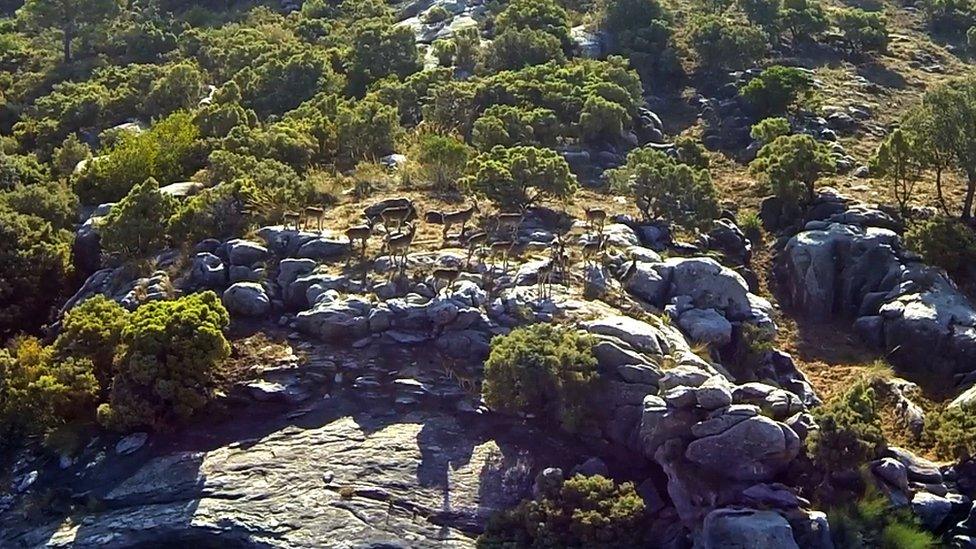
Drones are being used to monitor the animals in their mountainside habitat
Populations of Spanish ibex are being hit by a deadly disease. Now scientists are using drones and thermal cameras in an effort to conserve the mountain goat.
A herd of wild mountain goats leap and scatter at a sudden sound overhead. The scrubby, uneven terrain of the upper reaches of the Sierra de las Nieves national park is a protected area and the goats' natural habitat.
They have no trouble hiding themselves in among the rocks and clusters of bushes which may help when they are being hunted illegally.
But is it this ability to go to ground that has caused problems for scientists intent on managing the shrinking populations of Spanish ibex.
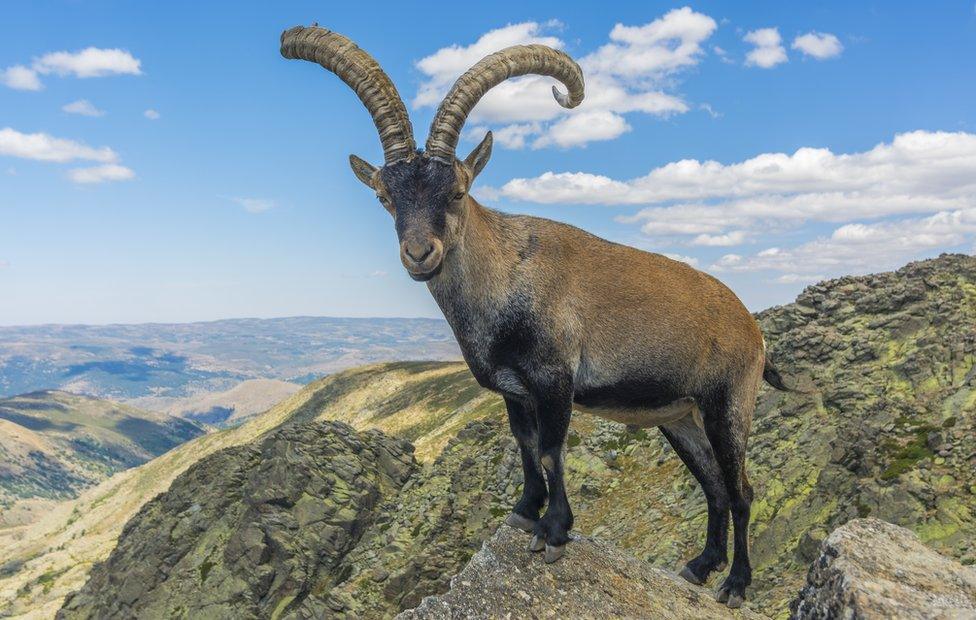
Populations of ibex are succumbing to the disease known as sarcoptic mange
But now a joint project of the University of Cordoba and the Junta de Andalucia is bringing together park rangers, vets and drone experts to find ways of dealing with outbreaks of deadly sarcoptic mange which has been devastating ibex populations in the Iberian peninsula.
The Spanish mountain goat is a species of ibex with four subspecies, of which two are now extinct and two which can still be found on the Iberian Peninsula in small pockets.
Although ibex conservation faces many threats, including loss of habitat to tourism and hunting, the most significant are outbreaks of the fatal disease, sarcoptic mange.
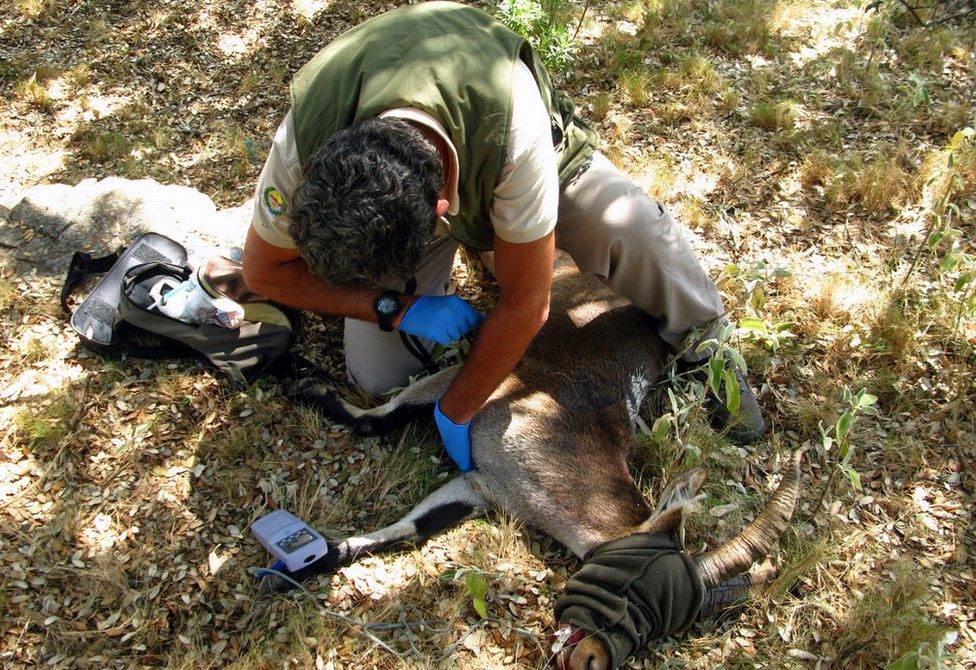
Here, a vet checks the pulse rate of a sedated ibex
This disease affects both males and females with the latter having their reproductive capabilities reduced.
Ricardo Salas de la Vega, head of the Andalusian programme of management of the Spanish Ibex and based in Malaga, says that having a multidisciplinary team is the best way of understanding the disease and its impact.
"The university research teams can complement our work through blood analysis," he says. "Aspects such as the time needed to recover after initial treatment and the best type of treatment can more easily be discerned."
One of the difficulties of the disease is that it spreads very rapidly from one goat to the next. According to Antonio Arenas Casas, professor of infectious diseases at the University of Córdoba, the means of contagion or transmission from one animal to another is almost always direct.
But he cautions that this is not the only means of the mange spreading. "In some cases it can also happen indirectly through an intermediary - a plant , a tree trunk or a stone," he continues.
The collaboration now involves drone operators who assist the scientists work more effectively by providing aerial images from high above the huge diversity of flora and fauna that covers the ground in the park.
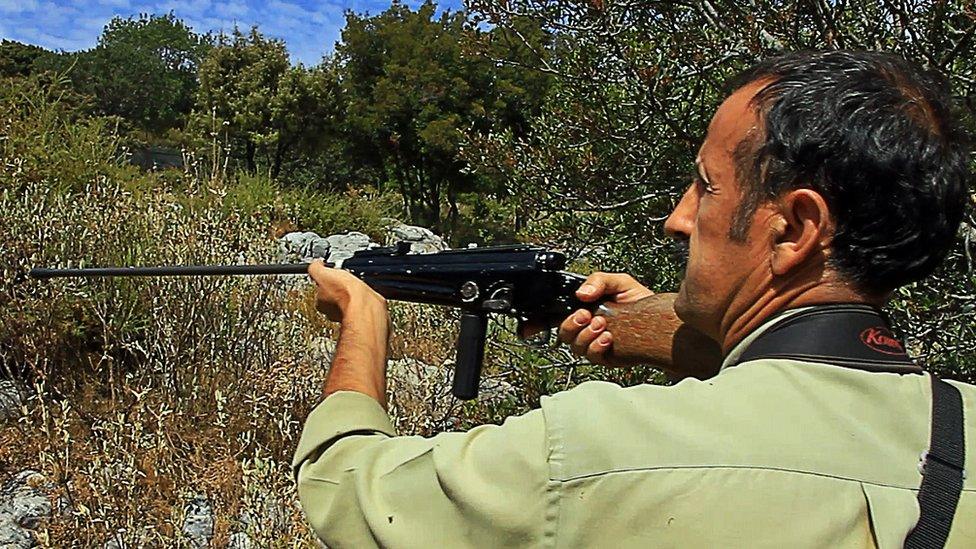
A marksman prepares to fire a sedation dart
Saul Matthew of Airdronerc believes that with the improved perspective provided by airborne cameras it is possible to identify more accurately those animals affected by the mange and dart them.
"If your view is from ground level, bushes, rocks and mountains get in the way and so targeting this type of animal is difficult," he says, going on to explain that once the anaesthetic has been successfully injected there can be other difficulties.
"After the dart injects the anaesthetic into the blood stream the animal can still run around for the ten minutes before falling to the ground. The drone continues to track down the animal because you get a broad view thanks to the wide angle lens of the camera."
Drone technology combined with walkie talkies allows Saul Matthew to guide the marksman to identify sick animals with tell tale signs of sarcoptic mange.
A white scab usually located on the back is the first visible indication that the animal is infected. But by using a heat seeking camera it is now possible to detect that an animal is sick before the lesion appears on the skin.
Ricardo Salas de la Vega confirms that the special cameras can spot what cannot be seen with the naked eye.
"The illness first produces a rise in the body temperature of the ibex," he says. "The thermal camera can detect this and we can start treating the animal prior to its becoming really sick. This is an important scientific development."
With technology helping identify animals in the early stages of the disease there are grounds for believing that the populations might stabilise.
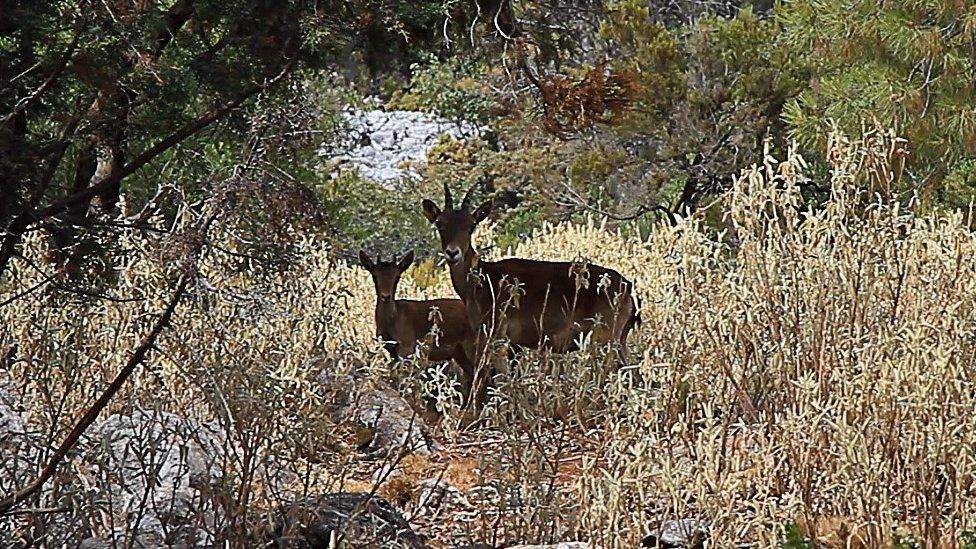
The goats hide in among the rocks and bushes of the Sierra de las Nieves national park
According to Félix Gómez-Guillamón Manrique, head veterinarian of the Reference Station of Spanish Ibex in the province of Málaga, that hope is compounded because previously there was no way of monitoring an animal once it had been treated but was still under the influence of the anaesthetic.
Often these animals would wander off, get separated from their herd and be preyed upon.
"Once we have returned them to their natural habitat because of being sedated they sometimes get lost and don't survive as they are pack animals," he confirms.
"Groups of ibex usually flee in coordination with female-juvenile groups led by an experienced adult female and an experienced male in male-only groups. Without drones locating them, animals can die as a result of being disoriented by the anaesthetic."
Employing two drones at the same time is an innovation the team is using to guide the ibex towards a semi-enclosed area where food containing medicine can be left without harm to other wild animals.
Additionally after filming, the footage can be analysed in the laboratory and this saves many days of work.
This pilot scheme may also in the future be used for other endangered species such as the lynx.